https://urbannext.net/thermodynamic-materialism/
| Thermodynamic Materialism https://urbannext.net/thermodynamic-materialism/ |

Categories: Energy and sustainability, Essay, Essays on Thermodynamics. Architecture and Beauty, Iñaki Abalos, No Density
Air in motion.
“Architecture is the air we breathe, an air laden precisely with that: architecture”. Alejandro de la Sota.
Air has been treated in architecture and its historiography as an element that is recognized, which can only be spoken about metaphorically, poetically or phenomenologically.
Even Le Corbusier decided against publishing, except in the form of a short article, the repeatedly announced text significantly entitled “L’espace indicible”. Space is the big issue in the modern discourse (Giedion’s Space, Time and Architecture), yet it remains in the territory of the subjective and the elusive, rather like the duende of the gypsy flamenco singer or the muse of the Romantic artist.
Science, meanwhile, throughout the nineteenth and twentieth centuries, set about deconstructing this void, this emptiness, the Cartesian res extensa, using disciplines that have populated what used to be defined by vacancy with micro- and macroscopic activity. The new approach ushered in by thermodynamics since the nineteenth century is decisive when it comes to reviewing the architectural and landscape conception of this element, converted into a building material in itself. This was assisted by the advent of parametric digital means that serve not only to decipher a nature that is changing in time but also to design strategies to construct artificial ambiences by creating new territories at the scale of the building, public space and the landscape. Air in motion now demands to be studied in its different manifestations, revealing its different descriptions, and to become the object of meticulous analysis to experience its powers, name them and proceed to construct what we have termed a new idea of thermodynamic beauty, which, without renouncing tectonic tradition, completes it, offering new and unsuspected directions to the work of the architect.
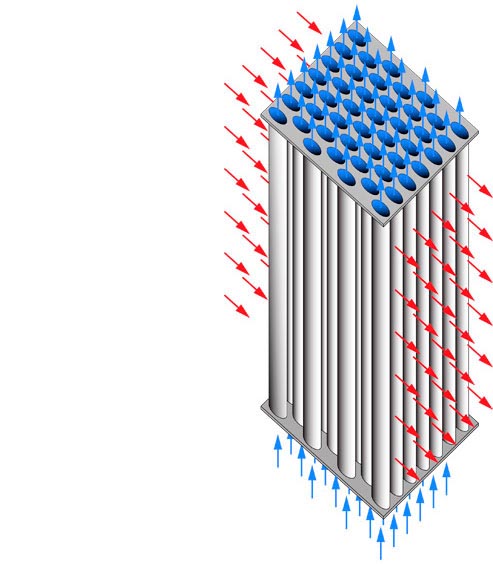
Heat recovery ventilation, also known as HRV, mechanical ventilation heat recovery or MVHR, is an energy recovery ventilation system using equipment known as a heat recovery ventilator, heat exchanger, air exchanger or air-to-air heat exchanger which employs counter-flow (countercurrent) heat exchange between the inbound and outbound air flows. HRV provides fresh air and improved climate control, while also saving energy by reducing heating (and cooling) requirements.
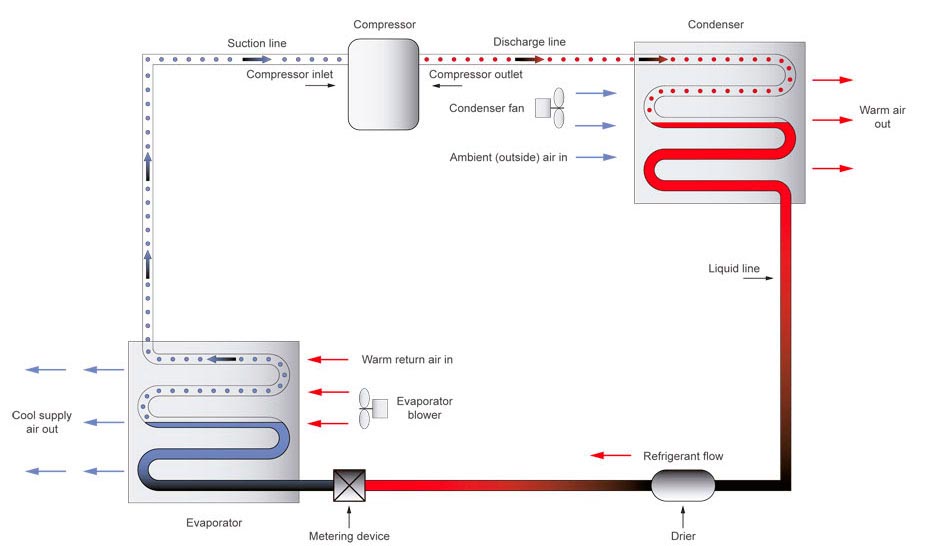
A refrigerator (colloquially fridge) is a common household appliance that consists of a thermally insulated compartment and a heat pump (mechanical, electronic or chemical) that transfers heat from the inside of the fridge to its external environment so that the inside of the fridge is cooled to a temperature below the ambient temperature of the room.

This is a combination of the plate heat exchanger with shell and tube heat exchanger technologies. The heart of the heat exchanger contains a fully welded circular plate pack made by pressing and cutting round plates and welding them together. Nozzles carry flow in and out of the plate pack (the plate-side flow path). The fully welded plate pack is assembled into an outer shell that creates a second flow path (the shell side). Plate and shell technology offers high heat transfer, high pressure and high operating temperature, compact size, low fouling and close approach temperature.
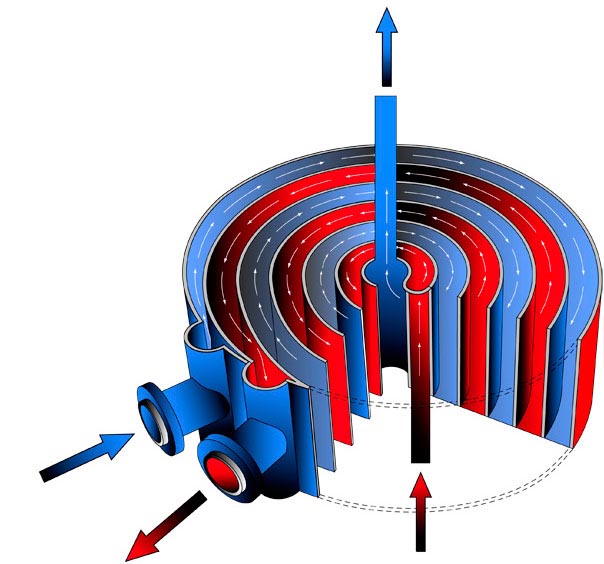
A spiral heat exchanger (SHE) may refer to a helical (coiled) tube configuration, though more generally it refers to a pair of flat surfaces that are coiled to form the two channels in a counter-flow arrangement. Each channel has one long curved path. Two fluid ports are connected tangentially to the outer arms of the spiral, and axial ports are common but optional.
The main advantage of the SHE is its highly efficient use of space. This attribute is often leveraged and partially reallocated to gain other improvements in performance, according to well known tradeoffs in heat exchanger design. (A notable tradeoff is capital cost vs. operating cost.) A compact SHE may be used for its smaller footprint and lower all-around capital costs, whereas an oversized SHE may be used for its lower levels of pressure drop and pumping energy, its higher thermal efficiency and lower energy costs.
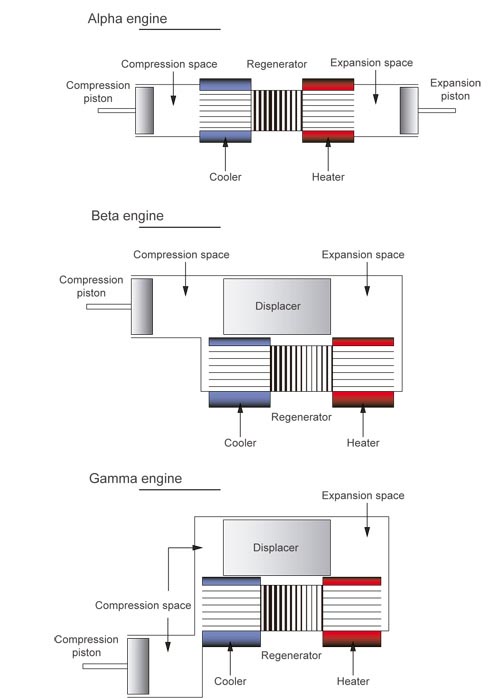
The mechanical configurations of Stirling engines are generally divided into three groups known as Alpha, Beta and Gamma arrangements. Alpha engines have two pistons in separate cylinders which are connected in series by a heater, regenerator and cooler. Both Beta and Gamma engines use displacer-piston arrangements, the Beta engine having both the displacer and the piston in an in-line cylinder system, while the Gamma engine uses separate cylinders.
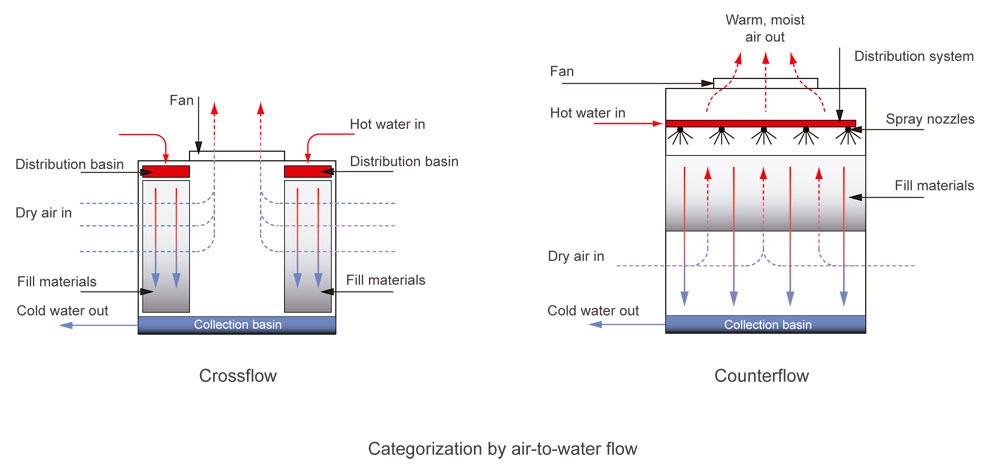
A cooling tower is a heat rejection device which extracts waste heat to the atmosphere through the cooling of a water stream to a lower temperature. Cooling towers may either use the evaporation of water to remove process heat and cool the working fluid to near the wet-bulb air temperature or, in the case of closed circuit dry cooling towers, rely solely on air to cool the working fluid to near the dry-bulb air temperature.
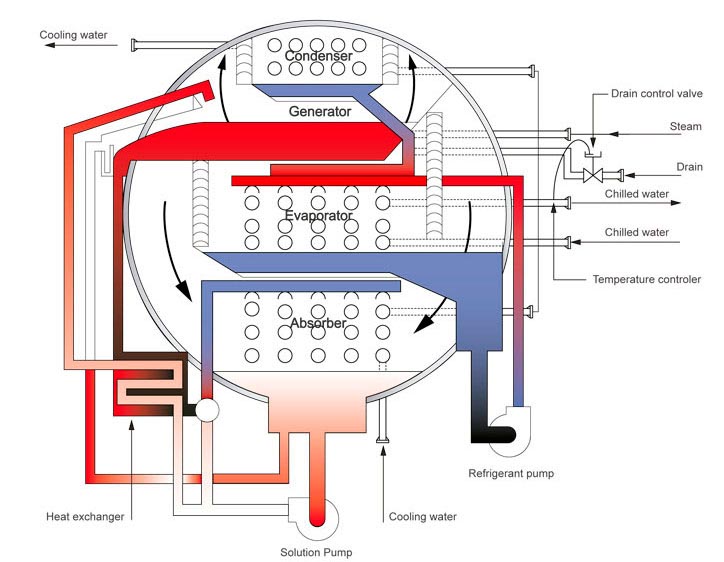
An absorption refrigerator is a refrigerator that uses a heat source (e.g. solar energy, a fossil-fueled flame, waste heat from factories or district heating systems) which provides the energy needed to drive the cooling process. The principle can also be used to air-condition buildings using the waste heat from a gas turbine or water heater.
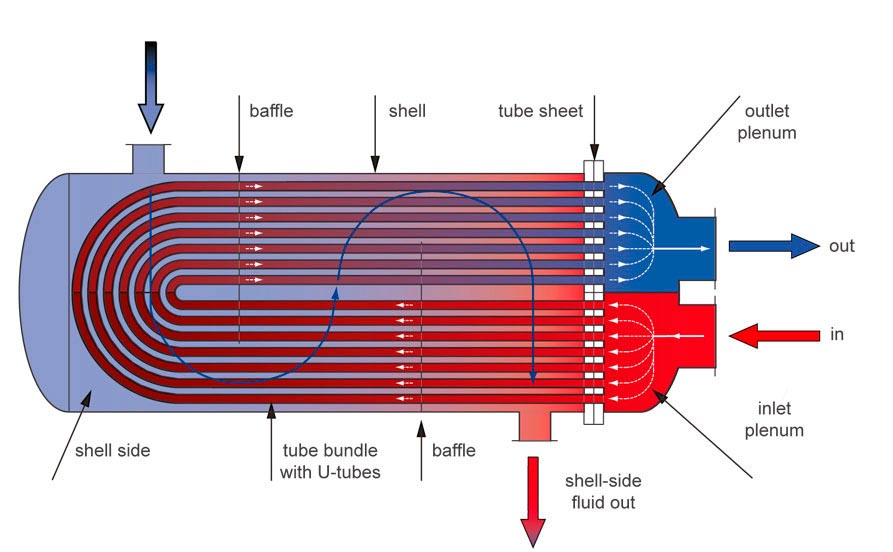
Shell and tube heat exchangers consist of series of tubes, one set of which contains the fluid to be either heated or cooled. The second fluid runs over the tubes that are being heated or cooled, either to provide or absorb heat as required. A set of tubes is called a tube bundle and can be made up of several types of tubes: plain, longitudinally finned, etc. Shell and tube heat exchangers are typically used for high-pressure applications.
| ISSN : 2575-5374 |